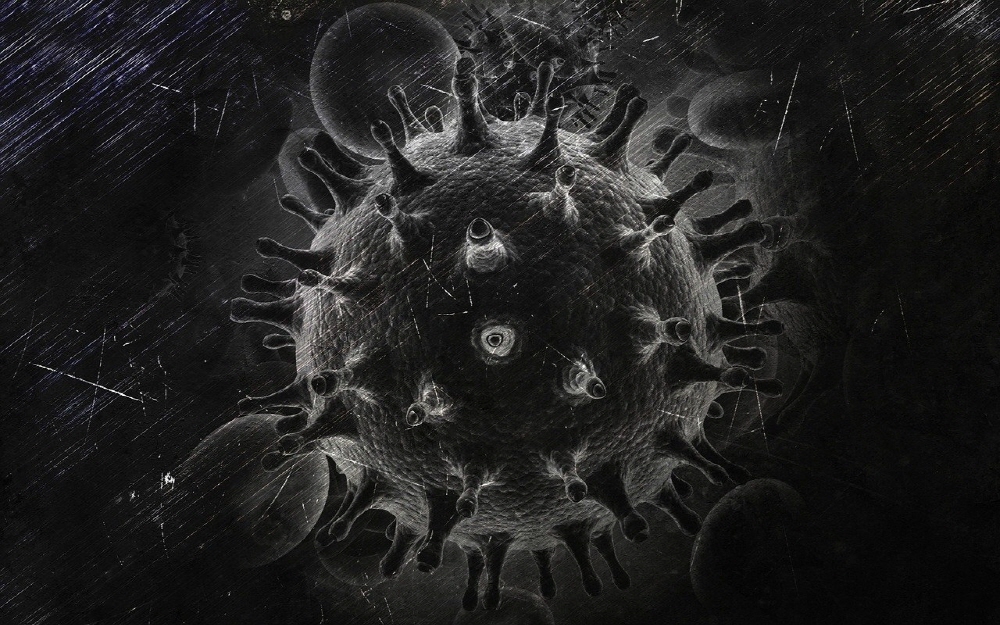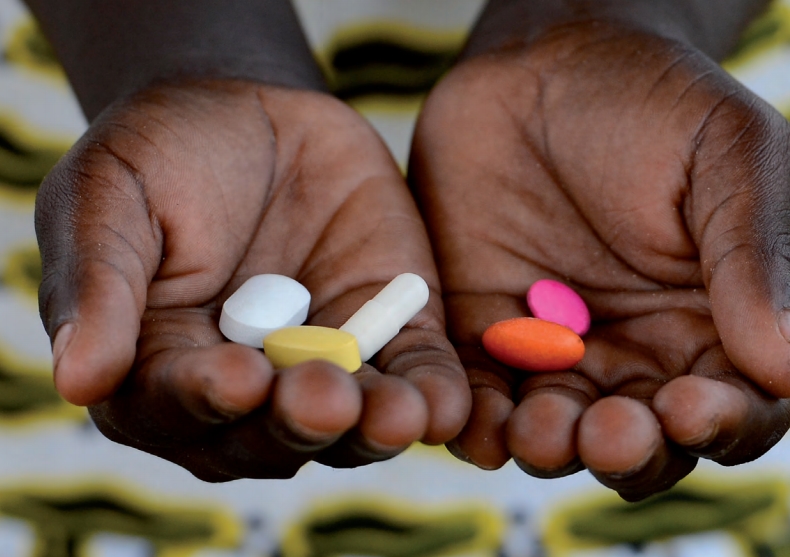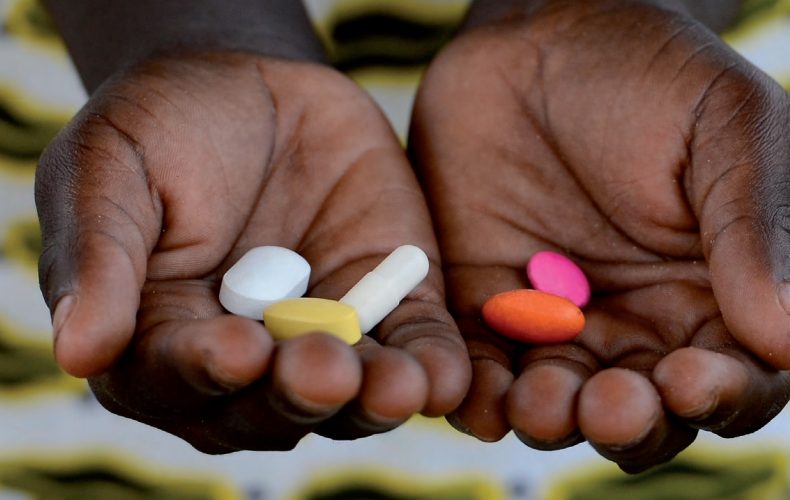
When you think of a pandemic, you may think of Corona 19, but there is a pandemic that occurred several decades ago and continues to this day. It is the human immunodeficiency virus HIV and AIDS, the acquired immunodeficiency syndrome.
Although understanding of HIV and AIDS has progressed and methods of prevention and treatment have been spreading, according to UNAIDS under the United Nations, the number of people infected with HIV worldwide reached 37.9 million as of 2018, of which 1.7 million were new infections for one year. In other words, HIV is spreading every day at the rate of thousands of people a day.
The difference between HIV and Corona 19 is that it knows the path of infection and how to prevent it, so it can be treated without cure. The United Nations and the United States are also setting specific numerical targets with an end to the HIV and AIDS epidemic. U.S. President Donald Trump repeated his goal a year ago in his textbook in early February. It is planning to end the HIV and AIDS epidemic in the United States, which continued 40 years ago, by 2030. This is a wonderful goal that doesn’t seem feasible. This is also a more surprising goal, considering that the Trump administration has been cutting out HIV-related programs and medical policies so far.
However, many public health experts believe that HIV and AIDS cannot be virtually eradicated by 2030, not only in the United States but around the world. There are currently an estimated 37.9 million people living with HIV worldwide. They are not expected to be cured by treatment, but must live with HIV for life. However, the scary thing about HIV is that it causes AIDS, which destroys immune cells, but with the development of antiretroviral drugs, it is possible to prevent progression at a stage much earlier than the outbreak of AIDS.
Antiretroviral drugs have already been used for quite some time. Now, if treatment is started early in HIV infection, the infected person can live almost the same life as the non-infected person. In addition, most people with HIV who receive treatment have low levels of HIV in their blood, making them less likely to infect others.
In recent years, there is also a prophylactic drug PrEP (pre-exposure prophylaxis) that people who come into contact with HIV-infected people can use to prevent infection. PrEP doesn’t offer complete protection against HIV infection at low cost by combining several antiretroviral drugs, but taking the medication as directed daily can reduce the risk of infection by 99%. Moreover, condoms are also a means of preventing the spread of sexually transmitted diseases, including HIV.
There are some routes of HIV infection that use a syringe, but blocking it can help prevent the spread of HIV. Rather than strengthening the drug crackdown, it can be in the form of providing related products such as new syringes or alcohol cotton in exchange for used syringes.
That doesn’t mean it encourages drugs. At least it can reduce the risk of spreading HIV, and in fact, the adverse effects such as increased drug use in such programs are said to be limited. The syringe exchange program also connects drug users to the medical system, and through this program, users can receive antiretroviral treatment if they need to undergo an HIV test.
These various countermeasures can be said to be a strategy to block the epidemic that has continued since the 1980s. What is important is to detect hidden HIV, among others, by examining and discovering high-risk groups, helping infected people to receive treatment so that they do not spread, and lowering the risk of people with HIV.
In 2016, the United Nations set a goal to end the global HIV epidemic by 2030. This includes making the number of new infected people less than 200,000 annually by 2030 and ensuring that 95% of infected people know whether they are infected. 95% of HIV-positive people are being treated, and 95% of people being treated aim to completely suppress the virus. New York City and others are setting higher targets. In 2014, New York State authorities announced an initiative to combat AIDS and set a timeline that will continue through 2020. In New York, this initiative has been well under way because it is easy to use PrEP by providing funding through the low-income insurance system (Medicaid), the possibility of testing for sexually transmitted diseases by nurses, and subsidies to clinics that perform tests and treatments at low cost or free of charge And what was paid. These initiatives are aimed primarily at homosexuals and communities of color at high risk of HIV.
According to statistics released in 2018, the program is expected to meet the New York City targets for 2020. The goal is that 65,000 New Yorkers receive PrEP, reducing the number of new infections to 750 or less per year, and suppressing the virus in more than 85% of patients receiving antiretroviral therapy.
The Trump regime’s 2030 initiative secured $291 million in funding in 2020, but the program is still in its infancy. In addition, the proportion of HIV patients treatment in the entire US healthcare system is not yet high. Compared to countries with national insurance systems such as the UK and Canada, the rate of suppression of the virus for HIV patients is low in the US.
One of the reasons the virus suppression rate is not rising is that the cost of HIV treatment in the United States is very high. The CDC of the U.S. Centers for Disease Control and Prevention estimates an HIV lifetime medical bill at $485,500. Most of this burden is covered by insurance companies and subsidy programs, but due to the large amount of self-pay, patients reduce the amount of drugs at their own discretion or give up on buying drugs. In a 2019 study, 7% of HIV patients did not comply with prescriptions because of drug costs, and 14% took other steps to reduce the cost burden.
HIV treatments are not cheap for the time being. According to a paper published in February, the initial cost of antiretroviral treatment in the United States increased by 34% from 2012 to 2018, and the rate of increase is 10 times the rate of inflation. The cost of PrEP is also an obstacle to eradicating HIV. One month’s supply is worth $2,000. Even with insurance, the self-pay is often large, and it is a structure that continues to be difficult in the long term. These prices are also affecting public programs.
Of course, there are signs of improvement. In 2021, U.S. insurance companies are allowing PrEP to be covered without burdening the patient. Last year, a US government advisory agency recommended that PrEP is a widely provided preventive service. If such an insurance system (Medicare for All) in the United States is established, the necessary medical care can be covered by insurance by the government, and there is a possibility that it will lead to cost reduction such as PrEP and antiretroviral drugs.
The same is true globally. In early 2000, the number of infections in Africa, where HIV infection was high, declined dramatically, but according to the 2019 UN report, the prospects that the UN’s 2020 goal could not be achieved and the goal until 2030 is unreasonable. According to the WHO, as of 2018, 1.7 million new people were infected with HIV worldwide.

Lack of funds is holding back the eradication of HIV. The United Nations has requested member states to pay $26 billion annually to the program by 2020. However, what the United Nations received in 2018 was $19 billion, down $1 billion from the previous year. According to a paper cited by the United Nations, every dollar spent on preventing the spread of HIV ranges from $2 to $6 in economic benefits.
There is also another problem. According to WHO’s 2018 report, more than 10% of HIV-positive patients in 12 countries, including Africa, Asia, and the United States, had two types of HIV drug-resistant viruses. If a drug-resistant virus spreads to 10% of patients, it is considered that resistance increases if the same drug is used continuously in others. Even if there are no problems for the time being, it may be an obstacle to future treatment.
To completely eradicate HIV, it is better to develop a vaccine. Gene-editing techniques such as CRISPR can target the virus itself, and there are indirect ways to strengthen human immune cells and prevent HIV infection. It is also developing antiretroviral treatments that keep medication intervals between weeks or months. At least one of these has reached stage 3 of clinical trials. These methods are expected to reduce the risk of developing tolerance.
The greatest challenge to eradicating HIV is being created by humans. Important policies, such as the US syringe exchange program, may be underutilized or difficult to popularize life-saving drugs due to poverty and the greed of the pharmaceutical industry. It can be said that more effort is required. Related information can be found here .


















Add comment